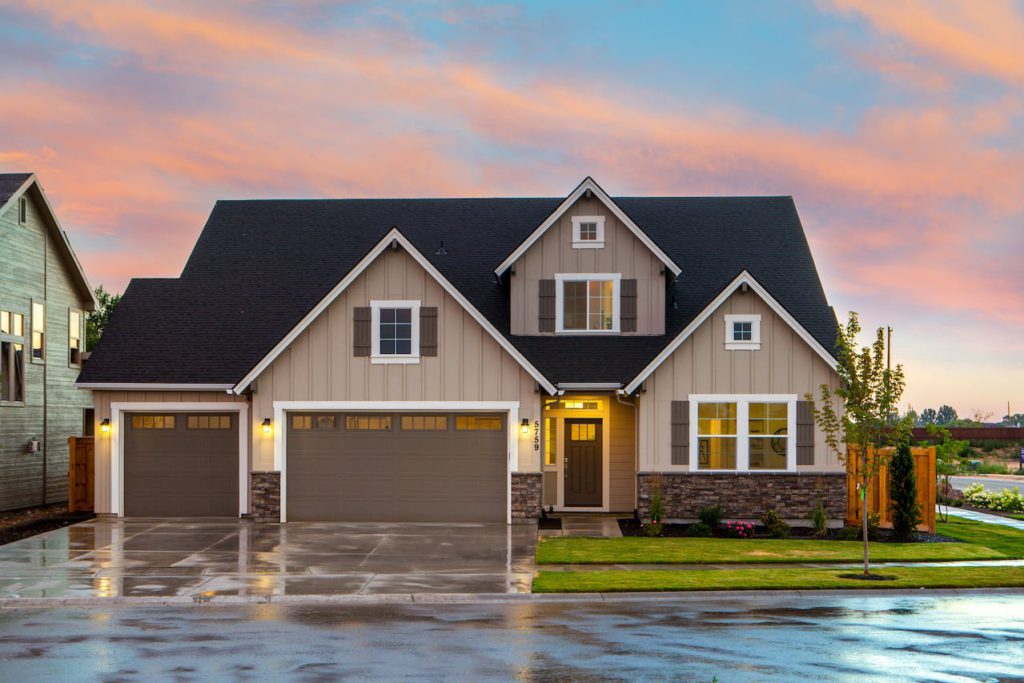Have you been daydreaming about building design? Whether you’re envisioning your dream home, crafting an inspiring office space, or designing a breathtaking building, key design elements play a pivotal role in the end result. Consider factors such as line, direction, light, materials, and texture to take your architectural design to the next level! These principles have the power to transform an ordinary space into something awe-inspiring. Let your imagination run wild as you balance practicality and aesthetics.
Consider these areas of focus for your architectural building design:
Line and Direction
Lines are not mere strokes on a blueprint; they are the foundational building blocks upon which the entire structure and identity of your building rests. Lines, in all their diversity, serve as the architectural backbone, dictating a design’s flow, direction, balance, and character.
Lines can also express different things:
- Horizontal lines evoke a feeling of calm and meditation.
- Vertical lines draw the eye upwards, conveying a sense of strength and grandeur.
- Diagonal lines infuse dynamism and energy into a space, leading the eye on an exciting journey.
- Curved lines can create a sense of fun, freedom, and enjoyment.
Consider a contemporary skyscraper with sleek vertical lines, giving it an air of sophistication and aspiration. On the other hand, a cosy cottage with its gentle sloping rooflines offers a sense of comfort and homeliness. The style of line you choose and how you infuse it into your design can set the overall tone for your space. Are you looking to draw inspiration from Tolkien’s beloved Hobbiton, Barcelona’s curved masterpieces, or something more chic and contemporary?
Direction also ties into this principle. A well-placed line can efficiently lead occupants through an area, creating an intuitive and effortless experience – just as the curved lines in a museum’s architecture can seamlessly guide visitors from one exhibit to another. Lines are the silent storytellers of architectural design and aid in creating direction and purpose for visitors.
If you’re planning to draw the eye upwards, whether for a magnificent skyscraper or stunning high ceilings, it’s wise to consider what materials, services, and equipment are needed, including cranes hire.
Texture
Texture is the tactile language of architecture. It’s a vital element that breathes life, dimension, and character into spaces. Imagine a modern urban dwelling with slick glass facades juxtaposed against warm timber cladding. The smooth, transparent glass and the tactile, earthy timber create an impressive sensory experience.

While you may add textural elements after your building design is complete, including fluffy pillows, intricate rugs, and three-dimensional artworks – there are many simple ways to enhance your building’s textural elements. Consider incorporating chic brickwork, timber screens, marbling or metal railing.
Texture doesn’t always have to be strictly material-related. It can also be a visual experience. There are plenty of ways to boost that detail, from lighting effects to fabrics. Well-placed lighting can cast shadows and highlights that create an illusion of texture. You may even consider optical illusions! Geometric patterns on the floors, walls, or ceilings can visually alter the perception of a surface. Wall treatments are also a popular way to introduce texture into your space.
Consider the following:
- Wallpapers
- Paint techniques: ragging, stippling, faux brick patterns
- Wall panelling
- Stencils
There are many ways to accentuate existing textural qualities within your building design without breaking the bank. A timber coating or deck oil, for example, is a great way to highlight the natural grain of your timber materials. Concrete stains can also appeal visually to your flooring – significantly if your contractor adds swirls, marbling, or stencilled designs.
Colour
Colour adds soul and personality to spaces and shouldn’t be underestimated. The power of colour can alter a room’s overall ambience and mood. Sunshine yellow, for example, can radiate warmth and joy, while cooler tones offer a calm and tranquil embrace.
Consider painting a feature wall to add some focus to your area. Whether a bold, daring red to boost your energy, a lively pink to encourage positivity, a purple to promote luxury, or a soothing green to stimulate relaxation. Be careful when choosing your feature shade, as you wouldn’t want to create a mood that doesn’t align with your building’s overall identity.
Paint is one of many ways to introduce colour into your design. You may consider the following:
- Coloured glass or stained windows
- A decking stain
- Colourful furniture
- Plants and florals
- Coloured pendant lights or lampshades
- Metalic surfaces
- Colourful tiles and water features
Light
The light within your home, building, or office can dramatically impact the mood of the space. You can experiment with different light sources to achieve your desired look and feel, whether natural or artificial.
The gift of the sun is an architect’s best friend. Natural light can infuse spaces with warmth and a connection to the external environment. Large windows, skylights, and strategically placed openings can harness the beauty of daylight and create a sense of openness. Beyond aesthetics, natural light offers numerous benefits, including energy efficiency, improved well-being, and reduced reliance on artificial lighting.
When the sun sets, the torch passes to artificial light sources. Well-planned artificial lighting can enhance functionality and accentuate design elements. The possibilities are endless, from ambient lighting that provides a soft, welcoming atmosphere to task lighting that illuminates workspaces precisely.
Depending on the function of your building, you may consider:
- Restaurant and cafe pendant lighting
- Hotel chandeliers or sconces
- Office task lighting or recessed downlights
- Retail track or accent lighting
- Museum track or fibre optic lighting
- Outdoor path lighting
- Healthcare indirect lighting
- Home vanity lights, cabinet lighting, floor lamps, cove lighting
- Outdoor fairy or festoon lighting
Materials and Equipment
While the actual design of your building is vital, the materials and equipment you use are just as crucial in shaping your creative vision. Whether constructing a skyscraper or designing a modern, urban home, there is a wide range of materials to consider – from concrete and steel to timber and glass. Materials can influence the overall aesthetic and functionality of a building. A glass facade, for example, can modernise a city skyline, while timber can add warmth and character to a space.
Depending on the purpose behind your building or business, you may also need to consider:
- Sound-proofing materials for commercial buildings or music studios.
- Hardwood or laminate flooring for high-traffic companies such as retail stores.
- Non-porous and antimicrobial material like vinyl flooring for healthcare patient rooms.
- Floor coatings for manufacturing facilities.
The equipment needed to work with these materials is also essential, including a Frannas crane, tower cranes, bulldozers, excavators, concrete mixers, and more!
Architectural building design relies on fundamental principles, including line, direction, texture, and materials. These elements shape the physical structure of your arrangement and the overall atmosphere and identity. Every decision you make impacts the final result, from the colours you choose to the materials you lay down. To craft a space that truly inspires and welcomes visitors, balance practicality with aesthetics and don’t be afraid to let your imagination run wild.

